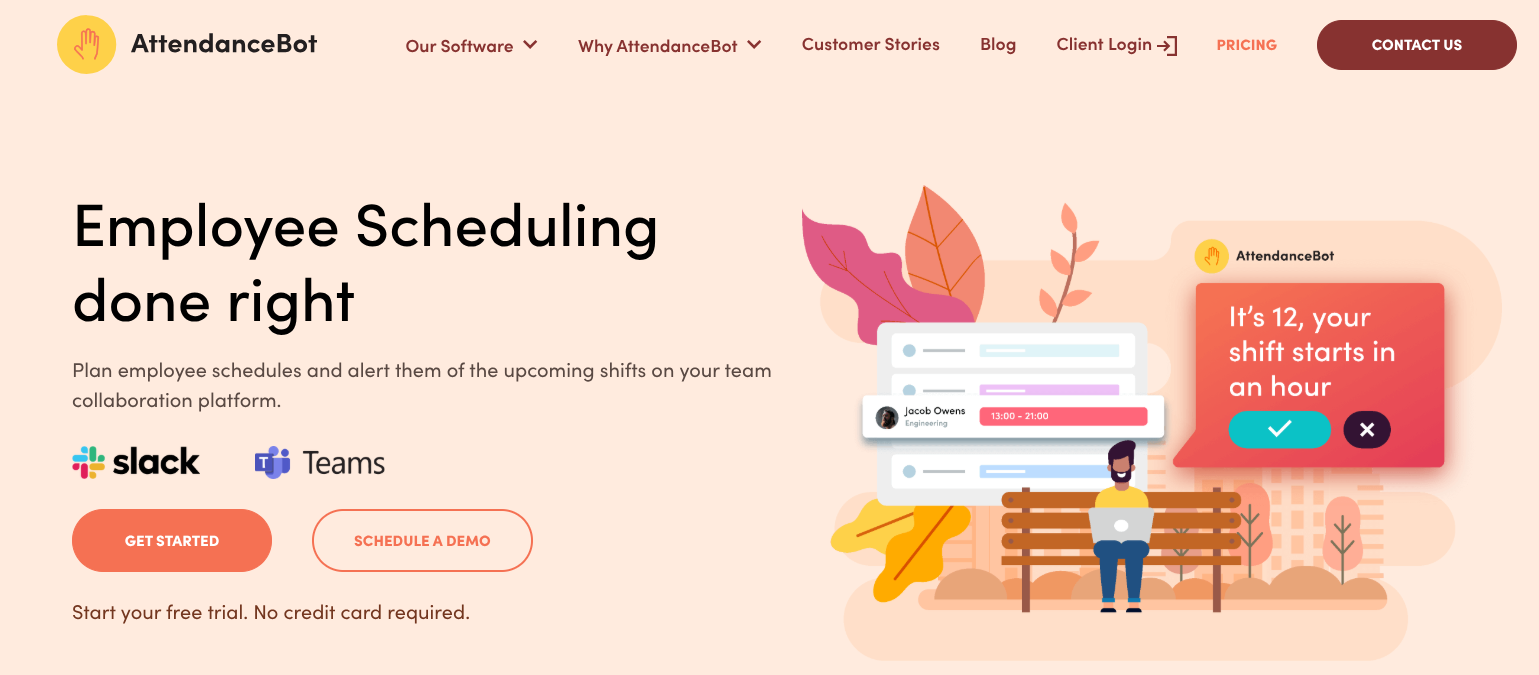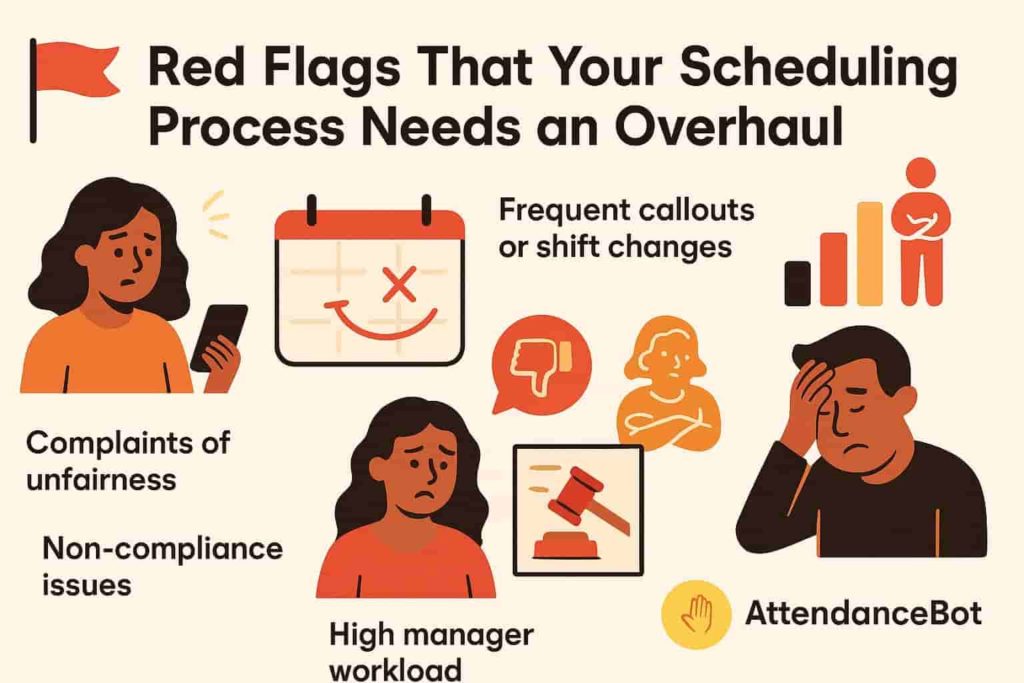Managing schedules across multiple retail locations isn’t just about filling shifts—it’s about finding the sweet spot between what employees want and what the business needs. Operations managers know this tension all too well: some employees prefer early mornings, others want weekends off, and peak foot traffic doesn’t wait for anyone’s ideal schedule. When you’re juggling employee shift preferences, ensuring scheduling fairness, and still trying to meet workforce needs, the risk of burnout, understaffing, or unhappy teams grows fast. Especially during seasonal surges or holidays, the pressure is on to get it right, without spending hours manually rearranging shifts or upsetting staff morale.
In this blog, we’ll explore practical strategies and tools that help operations leaders create smarter schedules—ones that align store performance with employee flexibility, boost team satisfaction, and improve operational efficiency.
Understanding the Tension Between Flexibility and Coverage
For operations managers, creating a fair and efficient schedule is like solving a puzzle where the pieces keep changing shape. Employees want more say in when they work—whether it’s to manage childcare, school, or personal commitments. On the other hand, your retail locations need predictable, consistent coverage to serve customers and hit revenue targets.
This tension gets even tighter during peak shopping times, seasonal promotions, or unexpected staff shortages. Ignoring employee shift preferences can lead to frustration and higher turnover. But giving too much flexibility without a system in place can create uneven schedules, last-minute scrambles, and coverage gaps.
That’s where scheduling fairness comes in. Fairness isn’t about giving everyone the exact same shifts—it’s about creating a transparent process where preferences are considered, workloads are balanced, and no one feels consistently stuck with the short end of the stick.
To succeed, retail operations need a scheduling approach that honors employee needs and aligns with foot traffic patterns, labor budgets, and compliance requirements. That’s the foundation for balancing workforce needs without burning out your team or sacrificing customer experience.

Best Practices for Fair and Flexible Scheduling in Retail
Balancing employee shift preferences, scheduling fairness, and workforce needs doesn’t require magic—it requires structure, visibility, and a willingness to adapt. Here are a few tried-and-true best practices operations managers can implement across retail locations:
1. Start With a Clear Availability Framework
Gather accurate availability from employees regularly—ideally through a digital system rather than back-and-forth texts or sticky notes. Make it easy for team members to update their preferences so schedules reflect real-time availability, not outdated info.
2. Forecast Demand Using Foot Traffic and Sales Data
Use historical sales data and foot traffic trends to project when coverage is critical. When you align employee schedules with actual business demand, you can optimize staffing without over- or under-scheduling.
3. Rotate Less Desirable Shifts
If certain shifts are consistently less popular—like late nights or holidays—create a rotating schedule so those hours are distributed fairly. This builds trust and signals that scheduling isn’t biased or punitive.
4. Offer Shift Swapping With Guardrails
Let employees swap shifts with manager approval to add flexibility without sacrificing coverage. Automated tools can help ensure these swaps stay compliant with labor rules and don’t disrupt balance.
5. Leverage Scheduling Software That Supports Flexibility
Manual scheduling can’t keep up with the complexity of multi-location retail. Modern tools help automate availability collection, detect conflicts, and optimize shift assignments—all while supporting employee autonomy.
Fair, flexible scheduling is a key driver of retention, morale, and performance in retail. And when employees feel heard and respected, they’re far more likely to step up during crunch times or fill in when needed.

Tools That Help Balance Shift Preferences With Business Needs
The right tech can turn scheduling from a weekly pain point into a streamlined, scalable process. For operations managers juggling multiple store locations, automation isn’t just a convenience—it’s essential. Here are a few retail scheduling tools built to manage employee availability, enforce scheduling fairness, and align with workforce needs:
1. AttendanceBot
Built for teams using Slack or Microsoft Teams, AttendanceBot lets employees submit shift preferences, request time off, and even clock in—all without leaving their chat platform. It’s especially useful for distributed teams that need real-time visibility into availability and coverage.

2. When I Work
A popular choice for retail teams, When I Work makes it easy for employees to input availability, request time off, and swap shifts. Managers can build optimized schedules in minutes and use built-in forecasting to plan for peak hours.
3. Homebase
Designed for small to mid-sized retail businesses, Homebase offers drag-and-drop scheduling, availability tracking, and compliance tools that help avoid accidental labor law violations. It’s especially strong in managing hourly teams across locations.
4. Deputy
Deputy helps balance business demand with staff availability using demand-based scheduling. It integrates foot traffic and sales data (from POS systems) to help schedule smarter, not harder.
5. Sling
Sling helps retail managers create fair, conflict-free schedules by automatically flagging availability issues or overtime risks. Employees can access schedules via mobile and swap shifts with approval.
These tools reduce manual back-and-forth, prevent over- or under-staffing, and foster a sense of transparency that employees appreciate. Plus, many integrate with payroll and POS systems to reduce administrative overhead.
What Happens When Scheduling Fails: A Real-World Look at the Cost of Mismatch
Picture this: It’s the first weekend of the holiday season. Foot traffic at your busiest location has doubled. But your morning shift is staffed with new hires who weren’t trained on your seasonal promos, and your two top performers? They’re scheduled at the quietest store across town, both working slow mid-week shifts they didn’t want.
Meanwhile, your part-time cashier calls out last minute, because they were scheduled during their unavailable hours (again). The result? A frazzled team, long customer wait times, and a handful of negative Google reviews before lunch.
These kinds of mismatches aren’t just bad luck—they’re the outcome of scheduling systems that don’t account for employee shift preferences, or that treat availability as an afterthought rather than a key input.
In contrast, retailers who use modern tools and put scheduling fairness at the center of operations are better equipped to handle seasonal surges and staffing surprises. They build loyalty with employees and protect their bottom line.
If your store is still running on outdated spreadsheets or manager guesswork, now’s the time to rethink your approach.
Retail Scheduling by the Numbers: Why It Pays to Get It Right
Investing in a robust scheduling system isn’t just about convenience—it’s a strategic move that can significantly impact employee satisfaction, operational efficiency, and legal compliance. Here’s what the latest data reveals about the importance of honoring employee shift preferences, ensuring scheduling fairness, and effectively balancing workforce needs:
- Flexible Scheduling Boosts Retention: A survey by FlexJobs found that 70% of workers prefer flexible work arrangements, such as four-day workweeks or flexible hours, indicating that flexibility is a key driver of employee retention (FlexJobs).
- Manual Scheduling Consumes Valuable Time: Managers can spend up to three hours per week creating shift schedules manually. This time could be better utilized for training, team development, or customer engagement (Deputy).
- Predictive Scheduling Laws Are Expanding: Cities like San Francisco, New York City, Seattle, and Chicago have enacted predictive scheduling laws requiring employers to provide advance notice of schedules and compensate for last-minute changes. These regulations aim to promote workplace flexibility and protect against unfair scheduling practices (Economic Policy Institute).
- Stable Scheduling Reduces Turnover: Implementing fair and predictable scheduling practices can lead to up to a 19% reduction in employee turnover, particularly among part-time staff who often face unpredictable schedules (Center for WorkLife Law).
- Work-Life Balance Remains a Challenge: According to McKinsey, many frontline retail workers struggle with schedules that don’t align well with their personal lives, highlighting a misalignment between employee availability and business-driven staffing decisions (McKinsey).
The takeaway is clear: treating scheduling as a strategic function rather than a routine task positions retailers to reduce turnover, stay compliant with labor laws, and enhance overall operational outcomes.
Red Flags That Your Scheduling Process Needs an Overhaul
Most operations managers know that scheduling can make or break daily performance, but the red flags are often ignored until they become a staffing crisis. If your store is still using spreadsheets or legacy tools, here are telltale signs that your system may be creating more harm than help.

Frequent callouts or last-minute shift changes
When employees are regularly calling out or requesting swaps, it’s a strong indicator that schedules are clashing with real availability. This not only disrupts floor coverage but also puts added pressure on the rest of your team to fill gaps.
Unequal shift distribution among staff
If the same employees are consistently scheduled for weekend or closing shifts, it’s likely that your team perceives a lack of fairness. Over time, this leads to burnout for some and disengagement for others—two outcomes that raise turnover risk.
Persistent employee complaints about favoritism or unfairness
Verbal feedback, exit interviews, or even anonymous surveys revealing dissatisfaction with how shifts are assigned should be taken seriously. Scheduling should be transparent and consistent, not based on a manager’s memory or perceived loyalty.
Non-compliance with labor laws or union agreements
From predictive scheduling ordinances to mandatory rest periods between shifts, labor compliance is becoming more complex. Violations can result in financial penalties, legal disputes, and damage to your employer brand.
If shift planning requires dozens of emails, texts, and manual updates every week, your team is wasting valuable hours on a process that could—and should—be automated. Modern workforce management tools streamline approvals, swaps, and notifications in one place.
When these red flags appear, it’s not just a scheduling issue—it’s an operational one. Modern tools that incorporate employee shift preferences and forecast business needs make scheduling smarter, faster, and more equitable for everyone involved.
Final Thoughts: Smarter Scheduling Starts with Balance
Retail operations thrive when scheduling works for both sides of the equation—employees and the business. Prioritizing employee shift preferences doesn’t mean compromising on performance. When done right, it enhances scheduling fairness, improves morale, and supports more consistent coverage across locations and shifts.
But reaching that balance takes more than goodwill or experience. It requires tools and strategies built to match your scale, complexity, and compliance needs. From integrating employee availability directly into scheduling workflows to forecasting foot traffic and automating shift approvals, modern workforce management software takes the guesswork out of the equation.
For multi-location retailers looking to simplify their scheduling process and align it with actual store needs, adopting a solution that offers flexibility without losing control is the next step. When scheduling is smart, balanced, and scalable, both employees and customers benefit.
Looking to upgrade your shift planning process? Start by exploring tools designed for operational leaders, not just HR teams.



